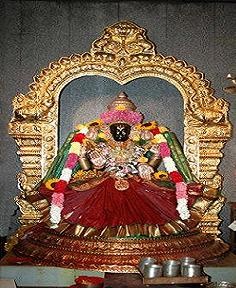|
Religion has always played a prominent part in ancient cultures, and this is all the more so in India. The temples have played a central role in the fostering of the Hindu religion. They are the most glorious institutions of our culture. They are the true abodes of the Divine. More than any other institutions it is the temples that have brought about the unity in religion in the whole of India. They are also the symbols of cultural unity as they have nurtured the fine arts over millennia. Even now, we can always observe in our temples religious or philosophical discourses, chanting of Vedas, Puranas and Tevaram, and performance of bhajan, music and dance activities. These activities are supplementary to the primary activities of the prescribed rituals for the consecrated Gods. The outstanding quality of the Hindu Temple architecture is its spiritual content.The fundamental purpose of the building art was to represent in concrete form the prevailing religious consciousness of the people. It Is mind materialized in terms of rock, brick or stone. This characteristic of Hindu architecture is emphasized by the treatment of Its wall surfaces. The scheme of sculpture which often covers the whole of the exterior of the temple is notable not only for the richness of its decorative effect, but also for the deep significance of its subject matter.Carved in high or low relief are all the glorious Gods of the age-old mythology of the country, engaged in their well known ceremonials, an unending array of imagery steeped in symbolism, thus producing a never ending story of absorbing interest. The Hindu temple is not just a congregational structure or prayer hall. It is the House of God and the image inside is the soul. Agamas and Upanishads make several references to the correspondence of the structure of the temple to the human body and soul. One of our saints says as follows: “Regard your ff9966 as the temple, your mind as the worshipper, truth as purity needed for worship, and perform worship to God.” These and similar expressions of human ff9966 and soul have influenced the Hindu architecture and sculpture of the temple. The central structure of the temple is the sanctuary known as the vimana, of which the upper and pyramidal or tapering portion is called the sikhara or gopuram, meaning tower or spire. Inside the vimana is a small chamber known as garba griha (womb-house) for the reception of the Deity and it is entered by a doorway on its inner, and usually, eastern side from a second room called the Mukhamandapa or Ardhamandapa.The presiding Deity in the garba-griha represents the supreme power that directs and controls the whole universe. The shrine symbolically represents the “tree of life.” The deity usually faces the east side to receive the rising sun’s visible source of energy which is the sustainer of life on earth. The Mukhamandapa is again extended by a larger hall called Mahamandapa. These three structures are invariably aligned along the central axis in a temple complex of medium size. Most of the temples have a processional passage or pradakshina patha (prakara) consisting of an enclosed corridor around the garbagriha and mukhamandapa. The prakaras remind the devotee entering the temple that the attachments born out of the identification with the various personality layers have to be left outside the temple, at least temporarily, and that the Lord should be approached with humility and total surrender so as to gain His grace. Outside the mahamandapa are the Dhvajasthambha and Balipitha. Enclosing these structures runs a peripheral wall called Thirumadhil or Bhitti. On the eastern side of this wall is built a towering structure called Rajagopuram. Sri Lakshmi temple at Ashland has the following principal sancta; these include the deities of Sri Maha Ganapati, Sri Mahalakshmi, Sri Venkateswara, Sri Nataraja with His consort Sri Sivakami, Sri Subrahmanya with His consort Sri Valli and Sri Devasena, Sri Hariharaputra, Garuda and Navagraha. A short description of these deities is given below. |
Architecture
ARCHITECTURE AND SYMBOLISM OF THE TEMPLE


